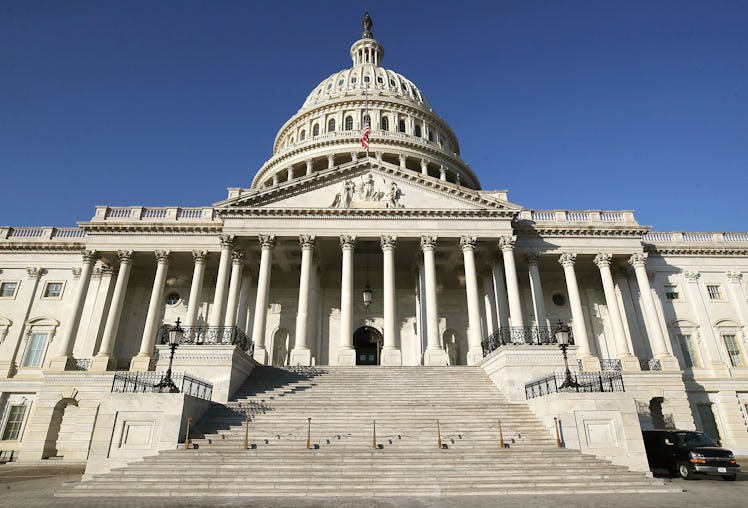
What Closes In A Partial Government Shutdown Is A Little More Complicated Than Normal
Truth be told, the holidays have distracted me from reality for a little while. Unfortunately, the new year is approaching and that means we have to get back to business, which includes being up to date on what's currently happening in our country. If you're like me, political lingo can really go over your head, and that's probably why you're wondering: what is a partial government shutdown? If you're wondering what changes between a partial and a total shutdown, here's what to know.
The short answer is: how much is closed. According to the Committee for a Responsible Federal Budget's website, a government shutdown occurs if Congress fails to pass remaining spending bills (in this case seven), which set aside money for specific spending for the fiscal year. If Congress doesn't get its finances together by the Dec. 21 deadline, the government goes dark. But in this case, Congress had actually approved funding for a portion for the government already: about three-fourths to be exact. Hence, the government is only partially shut down.
However, there are some government operations that didn't receive funding, including the State Department, the Justice Department, the Transportation Department, the Agriculture Department, and the Department of the Interior. Ultimately, that means the likes of national parks, the IRS, State Department services, and environmental and food inspections could be closed during this partial shutdown, according to Vox.
What's still open? A number of things, including (thankfully) the U.S. Postal Service and "essential services" like air traffic control, avoiding an even bigger mess of a holiday travel season. The military, border patrol, and federal courts are also not shutting down. Also open? Robert Mueller's investigation into possible collusion between the 2016 Trump campaign and Russia, which has its own sources of funding.
However, some things that are open might not stay that way. Some government operations, like federal courts and public museums, have the funds to stay open, but only in the short term. In a few weeks, things could look different.
Over the past few weeks, President Donald Trump has been determined to make Congress approve a $5 billion budget for his infamous U.S.-Mexico border wall. Despite Trump's persistence, Congress has been unwilling to approve the funding, even though Democrats offered a hefty $1.3 billion as a sort of peace treaty on Dec. 10. However, that amount wasn't enough for Trump, and tensions flared as the president continued to threaten a government shutdown if the border wall wasn't funded. In fact, during an Oval Office meeting with Vice President Mike Pence, House Minority Leader Nancy Pelosi, and Senate Minority Leader Chuck Schumer on Dec. 11, Trump declared that he would be "proud to shut down the government for border security" if Democrats don't approve the wall's funding.
Well, fast forward to Dec. 21 and, despite Congress forging a deal on the remaining spending bills ahead of the fiscal year deadline, President Trump refused to sign the agreement without guarantees for the border wall. As we enter day six of the partial government shutdown, I doubt I'm the only one who's wondering when this all will end. Unfortunately for us, rumor has it that there's no clear end in sight to this shutdown, and little progress has been made thus far.
Nothing says ringing in the new year like a partial government shutdown. Let's hope things settle down, and agreements are made, sooner rather than later.